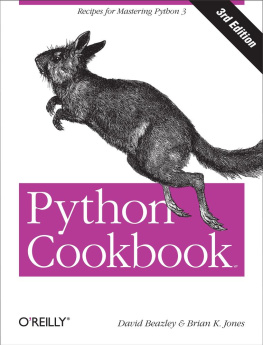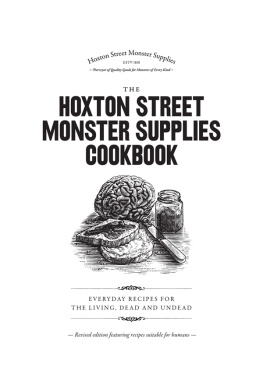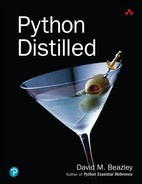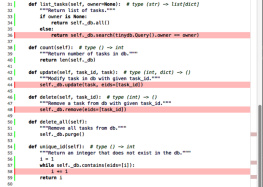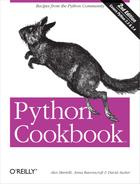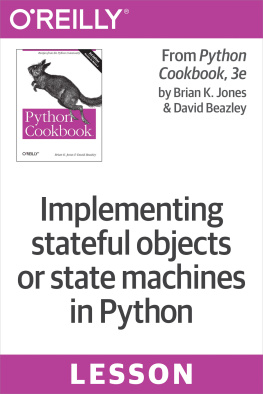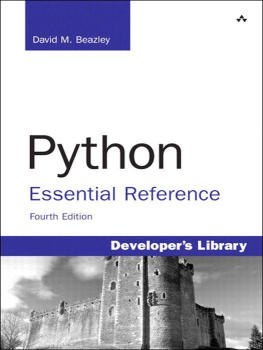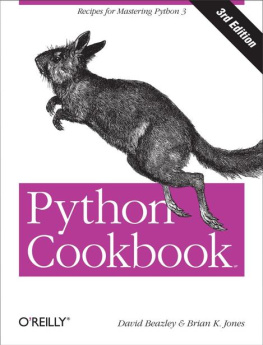David Beazley and Brian K. Jones - Python Cookbook
Here you can read online David Beazley and Brian K. Jones - Python Cookbook full text of the book (entire story) in english for free. Download pdf and epub, get meaning, cover and reviews about this ebook. year: 2013, publisher: O’Reilly Media, Inc., genre: Computer. Description of the work, (preface) as well as reviews are available. Best literature library LitArk.com created for fans of good reading and offers a wide selection of genres:
Romance novel
Science fiction
Adventure
Detective
Science
History
Home and family
Prose
Art
Politics
Computer
Non-fiction
Religion
Business
Children
Humor
Choose a favorite category and find really read worthwhile books. Enjoy immersion in the world of imagination, feel the emotions of the characters or learn something new for yourself, make an fascinating discovery.
- Book:Python Cookbook
- Author:
- Publisher:O’Reilly Media, Inc.
- Genre:
- Year:2013
- Rating:4 / 5
- Favourites:Add to favourites
- Your mark:
- 80
- 1
- 2
- 3
- 4
- 5
Python Cookbook: summary, description and annotation
We offer to read an annotation, description, summary or preface (depends on what the author of the book "Python Cookbook" wrote himself). If you haven't found the necessary information about the book — write in the comments, we will try to find it.
Python Cookbook — read online for free the complete book (whole text) full work
Below is the text of the book, divided by pages. System saving the place of the last page read, allows you to conveniently read the book "Python Cookbook" online for free, without having to search again every time where you left off. Put a bookmark, and you can go to the page where you finished reading at any time.
Font size:
Interval:
Bookmark:
Since 2008, the Python world has been watching the slow evolution ofPython 3. It was always known that the adoption of Python 3 wouldlikely take a long time. In fact, even at the time of thiswriting (2013), most working Python programmers continue to use Python2 in production. A lot has been made about the fact that Python 3 isnot backward compatible with past versions. To be sure, backwardcompatibility is an issue for anyone with an existing code base. However,if you shift your view toward the future, youll find thatPython 3 offers much more than meets the eye.
Just as Python 3 is about the future, this edition of the PythonCookbook represents a major change over past editions. First andforemost, this is meant to be a very forward looking book. All of therecipes have been written and tested with Python 3.3 without regard topast Python versions or the old way of doing things. In fact, many of the recipes will only work with Python 3.3 and above. Doing so maybe a calculated risk, but the ultimate goal is to write a book ofrecipes based on the most modern tools and idioms possible. It ishoped that the recipes can serve as a guide for people writingnew code in Python 3 or those who hope to modernize existing code.
Needless to say, writing a book of recipes in this style presents a certain editorial challenge. An online search for Python recipes returns literally thousands of useful recipes on sites such as ActiveStates Python recipes or Stack Overflow. However, most of these recipes are steeped in history and the past. Besides being written almost exclusively for Python 2, they often contain workarounds and hacks related to differences between old versions of Python (e.g., version 2.3 versus 2.4). Moreover, they often use outdated techniques that have simply become a built-in feature of Python 3.3. Finding recipes exclusively focused on Python 3 can be a bit more difficult.
Rather than attempting to seek out Python 3-specific recipes, thetopics of this book are merely inspired by existing code andtechniques. Using these ideas as a springboard, the writing is anoriginal work that has been deliberately written with the most modernPython programming techniques possible. Thus, it can serve as a referencefor anyone who wants to write their code in a modern style.
In choosing which recipes to include, there is a certain realizationthat it is simply impossible to write a book that covers everypossible thing that someone might do with Python. Thus, a priorityhas been given to topics that focus on the core Python language aswell as tasks that are common to a wide variety of applicationdomains. In addition, many of the recipes aim to illustrate featuresthat are new to Python 3 and more likely to be unknown to evenexperienced programmers using older versions. There is also a certainpreference to recipes that illustrate a generally applicableprogramming technique (i.e., programming patterns) as opposed to thosethat narrowly try to address a very specific practical problem.Although certain third-party packages get coverage, a majority of therecipes focus on the core language and standard library.
This book is aimed at more experienced Python programmers who arelooking to deepen their understanding of the language and modernprogramming idioms. Much of the material focuses on some of themore advanced techniques used by libraries, frameworks, and applications.Throughout the book, the recipes generallyassume that the reader already has the necessary background tounderstand the topic at hand (e.g., general knowledge of computerscience, data structures, complexity, systems programming,concurrency, C programming, etc.). Moreover, the recipes are oftenjust skeletons that aim to provide essential information for gettingstarted, but which require the reader to do more research to fill inthe details. As such, it is assumed that the reader knows how to usesearch engines and Pythons excellent online documentation.
Many of the more advanced recipes will reward the readers patience with amuch greater insight into how Python actually works under the covers. Youwill learn new tricks and techniques that can be applied to your own code.
This is not a book designed for beginners trying to learnPython for the first time. In fact, it already assumes that you knowthe basics that might be taught in a Python tutorial or more introductorybook. This book is also not designed to serve as a quick reference manual(e.g., quickly looking up the functions in a specific module). Instead,the book aims to focus on specific programming topics, show possiblesolutions, and serve as a springboard for jumping into more advanced materialyou might find online or in a reference.
The following typographical conventions are used in this book:
Constant width Used for program listings, as well as within paragraphs to refer to program elements such as variable or function names, databases, data types, environment variables, statements, and keywords. Constant width bold Shows commands or other text that should be typed literally by the user. Constant width italic Shows text that should be replaced with user-supplied values or by values determined by context.This icon signifies a tip, suggestion, or general note.
This icon indicates a warning or caution.
Almost all of the code examples in this book are available online at http://github.com/dabeaz/python-cookbook. The authors welcome bug fixes,improvements, and comments.
This book is here to help you get your job done. In general, if this book includes code examples, you may use the code in this book in your programs and documentation. You do not need to contact us for permission unless youre reproducing a significant portion of the code. For example, writing a program that uses several chunks of code from this book does not require permission. Selling or distributing a CD-ROM of examples from OReilly books does require permission. Answering a question by citing this book and quoting example code does not require permission. Incorporating a significant amount of example code from this book into your products documentation does require permission.
We appreciate, but do not require, attribution. An attribution usually includes the title, author, publisher, and ISBN. For example: Python Cookbook , 3rd edition, by David Beazley and Brian K. Jones (OReilly). Copyright 2013 David Beazley and Brian Jones, 978-1-449-34037-7.
If you feel your use of code examples falls outside fair use or the permission given here, feel free to contact us at .
Safari Books Online is an on-demand digital library that delivers expert content in both book and video form from the worlds leading authors in technology and business.
Technology professionals, software developers, web designers, and business and creative professionals use Safari Books Online as their primary resource for research, problem solving, learning, and certification training.
Safari Books Online offers a range of product mixes and pricing programs for organizations, government agencies, and individuals. Subscribers have access to thousands of books, training videos, and prepublication manuscripts in one fully searchable database from publishers like OReilly Media, Prentice Hall Professional, Addison-Wesley Professional, Microsoft Press, Sams, Que, Peachpit Press, Focal Press, Cisco Press, John Wiley & Sons, Syngress, Morgan Kaufmann, IBM Redbooks, Packt, Adobe Press, FT Press, Apress, Manning, New Riders, McGraw-Hill, Jones & Bartlett, Course Technology, and dozens more. For more information about Safari Books Online, please visit us online.
Font size:
Interval:
Bookmark:
Similar books «Python Cookbook»
Look at similar books to Python Cookbook. We have selected literature similar in name and meaning in the hope of providing readers with more options to find new, interesting, not yet read works.
Discussion, reviews of the book Python Cookbook and just readers' own opinions. Leave your comments, write what you think about the work, its meaning or the main characters. Specify what exactly you liked and what you didn't like, and why you think so.

